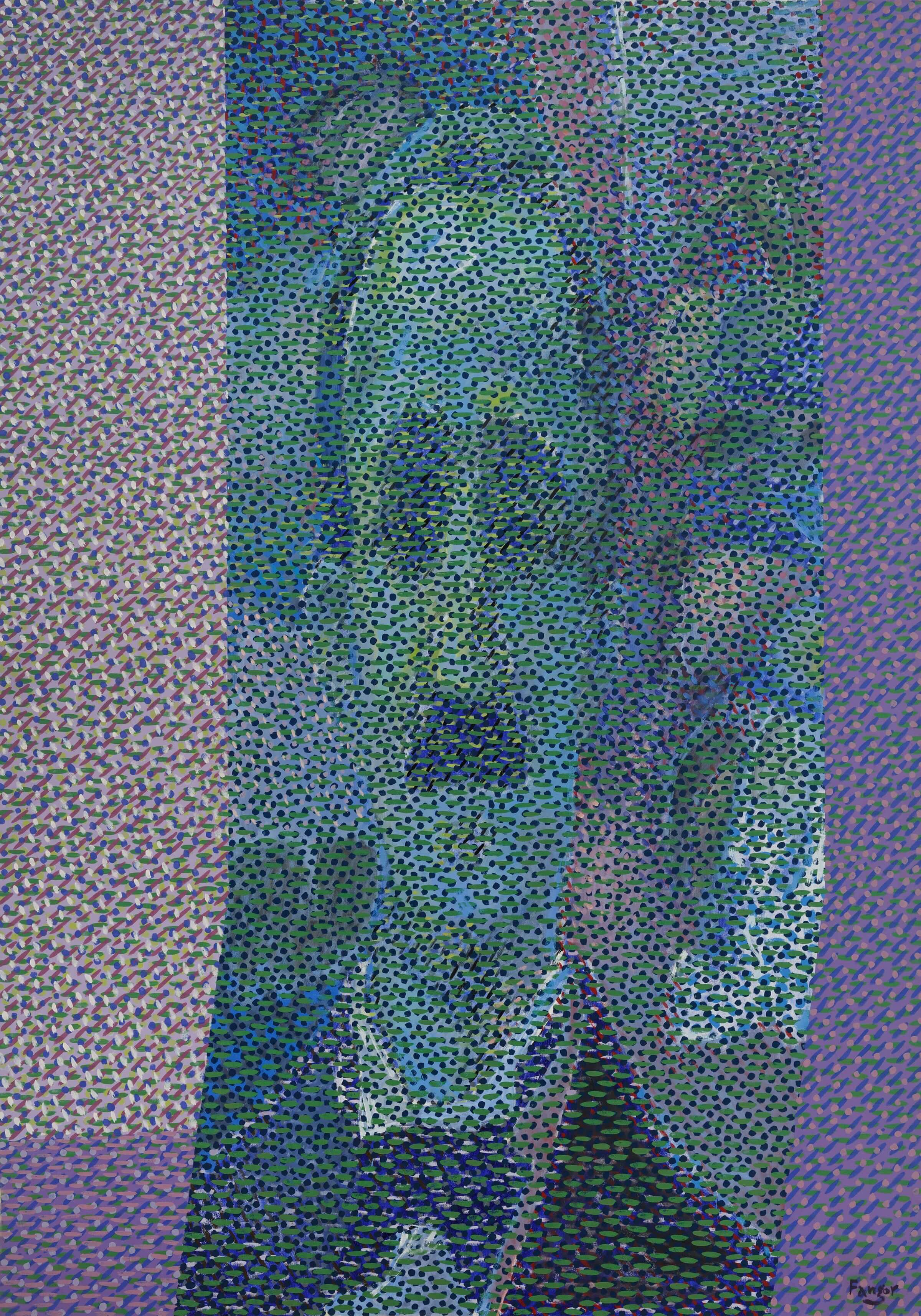
Wojciech Fangor
Panocek 3
Oil on canvas
254 x 178 cm
1977
The Polish-American artist Wojciech Fangor (1922-2015) has been internationally celebrated for his abstract optical works, but his lesser known and now critically acclaimed Television Paintings have proved to be hugely relevant today, as well. Fangor’s Op art achievements culminated in his solo exhibition at the Guggenheim Museum in New York in 1970, after which the artist shifted his interest to more figurative works – while still remaining fascinated by the issues of perception and space. In 1977 Fangor, who worked in NYC at that time, started his unique, short series Television Paintings (1977-1984), to which Panocek 3 belongs. This early work depicts the torso of an old-fashionably dressed man, whose name could mean a spiffy gent in Polish (although the origin of the title is unknown), though probably chosen randomly from a TV program. The figure is rendered in the violet, blue, and green dots and strokes that remind us of television pixels, but, from a bigger perspective, also of 19th-century pointillism, which aimed at stillness and duration. The artist plays with the viewer’s perception, blurring and sharpening the image depending on the viewing distance while letting the painting claim its presence in the physical space – almost letting the figure comes off the canvas.
During the 1970s and 1980s Fangor observed how television had invaded the private space of each American house and became a surrogate for human contact. The development of cable TV resulted, among other things, in 24-hour news broadcasting that started in 1980 (CNN), and, in 1981, a TV network that was entirely devoted to music (MTV). The omnipresence of TV, its strong influence on people’s lives, as well as the aesthetics and possible dangers of electronic communication, mesmerized the artist and challenged him intellectually. Next to the paintings, Fangor also made photographic series of television screens that randomly captured the changing popular visual culture and news, and left his analytical writings on the subject. “Being exposed in the same time-space to conflicting and colliding powers,” he said, “it’s as if several films are being broadcasted on one screen. One liquifies the other.”